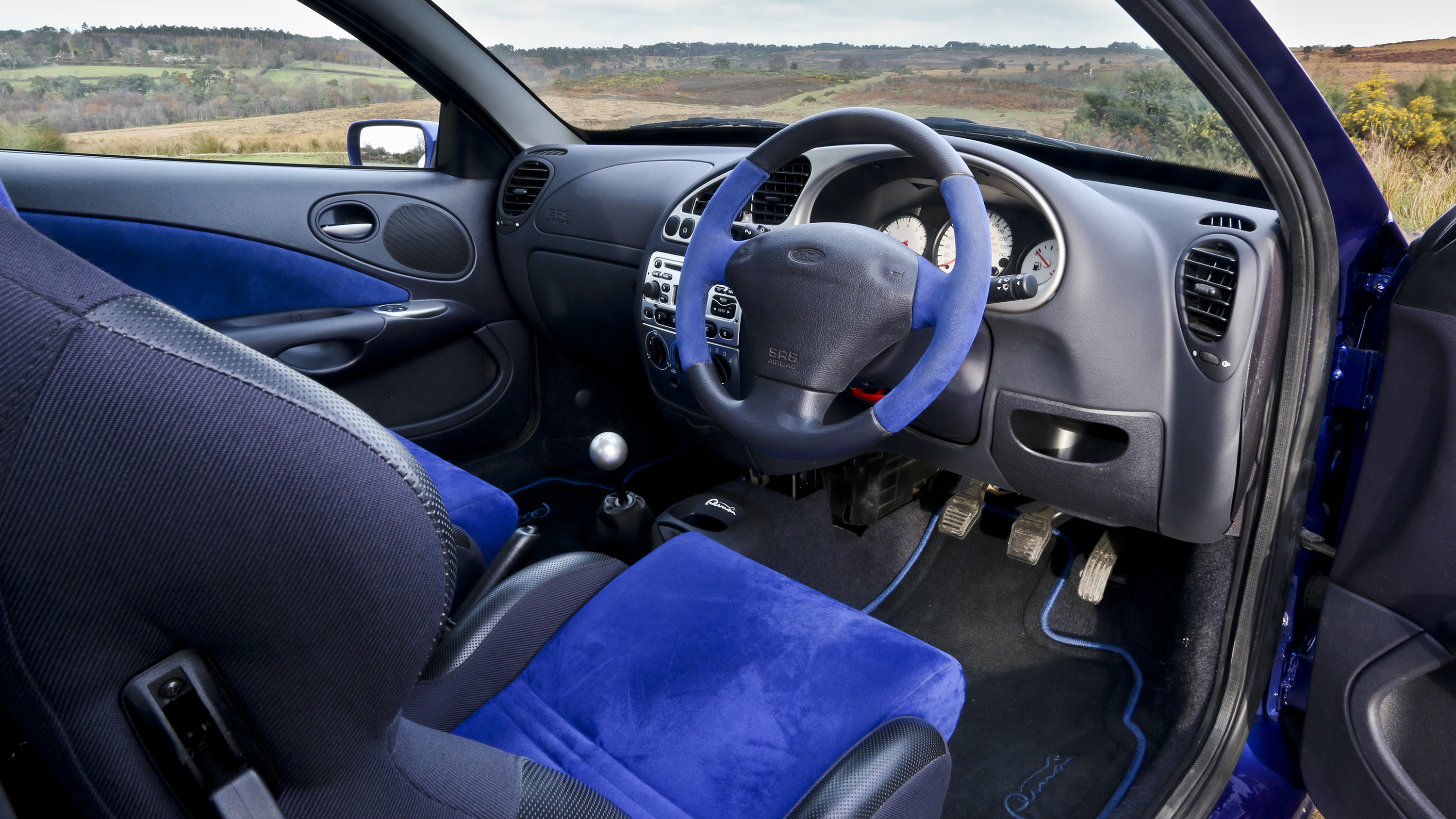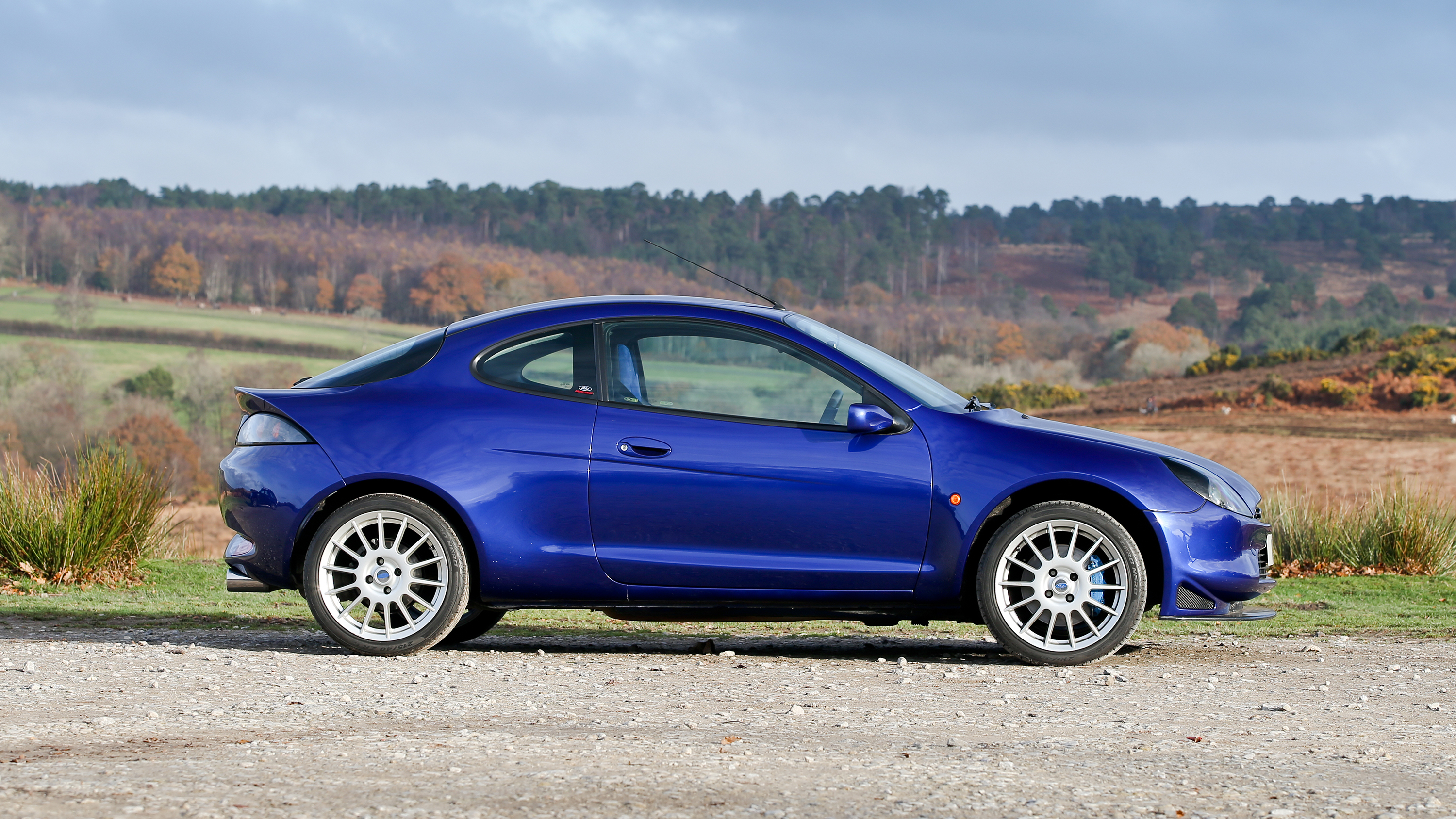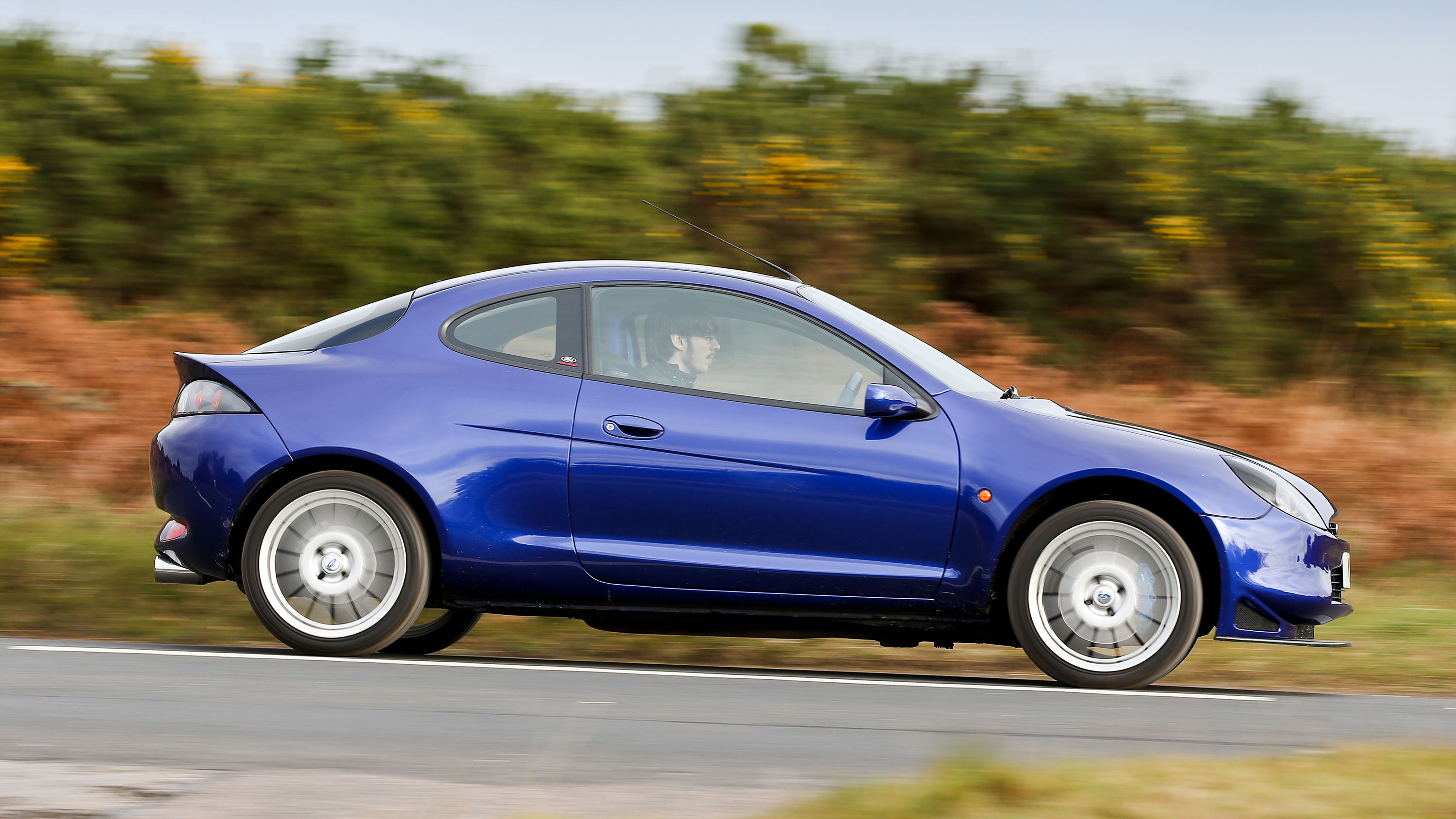
Buying
What should I be paying?
“To get around the homologation rule what people actually bought was a standard 1.7 Ford puma with a Racing Puma option pack,” says Simon Crosby, a Racing Puma expert. “Most never saw the 1.7 they ordered as they were dispatched to Tickford for conversion, and the customer then received their fully converted Racing Puma, often this means that the date of first registration can often be up to a year after the original build date.
“When the car is in fine fettle the cost of running is pretty good, the Zetec engine has always been pretty efficient, easily delivering an average of over 30mpg. Although throw it around a track, where it belongs, and frequent revving to 7,000rpm will see this halve rapidly.”
Simon says servicing should, in theory, be affordable. But you’re better off going to a specialist who knows Racing Pumas rather than a regular dealer. Given the small numbers these cars were made in, chances are they won’t have seen one in a while. This is especially true of cambelt replacement, which requires a bespoke tool that Ford dealers may not have any more.
“All the Ford Racing Puma-specific parts hold the notorious 909 (or 908) Ford Motorsport part numbers,” adds Simon. “That means they come with what is commonly known as ‘FRP tax’!”
Except, that is, for tyres. Expect them to last 10,000 miles and cost as little as £70 a corner to replace.
Time to get the biggie out the way: Pumas rust. Next time a standard car passes you, eye up its rear arches. If they aren’t bubbling away at the surface you’ll be lucky.
The Racing is afflicted differently, however. Its burlier body kit is essentially stuck on over a standard Puma, so those rear arch extensions are actually welded and glued over existing panels. Hidden corrosion occurs between the two, and Simon estimates it affects 85 per cent of cars. “Unfortunately the only way to see this is to take the rear quarter interior trim and speaker bins out and look down the hole.”
Get it fixed with third-party bits via a friendly welder and you can spend £750 per side fixing it; get proper parts and that’s more like £2,500. So yes, you could spend £5,000 fixing both if you’re fastidious about these things. Ouch.
Up front, the wings can also suffer corrosion, but it’s usually a repair rather than a replacement job. Good thing, as the parts are very rare and will set you back up to £500 per side.
Front and rear bumpers are even rarer; made of fibreglass, their big issue is looking fractured if they’ve taken a bit of a knock. Simon says just five original rear bumpers remain – £600 a pop – while a genuine front bumper will be £1,000. But third party manufacturers produce much cheaper reproduction parts.
Have a poke around the boot, too. Make sure it’s not damp – it can take in water, which can lead to rot – while the floor can suffer a bit of rust too.
The suspension was a collaboration between Eibach, Sachs and Ford. “Unfortunately, the original springs and shocks are no longer available,” says Simon. “So unless you can pick up a spare set from an owner then the only solution is to go to coilovers which does change the handling. Apart from that the rest of the suspension is either standard, or modified standard Ford parts bin stuff.”
The Alcon front brakes, though, are the expensive part of the car, and need plenty of maintenance. “Servicing, if used in daily conditions, should occur every 3,000 miles or so, to keep them tip top,” says Simon. “A lot of owners have two sets to allow them to switch over and get the others refurbished while not in use.”
“A badly maintained set of calipers could set you back over £700 to service if they require welding and machining,” he continues. “An amalgamation of water and salt causes them to rot badly in some case, and as with most FRP spares, new ones are no longer available. Standard front discs are no longer available but bell and rotor alternatives are around £400 a pair.”
Happily, the rear brakes are much simpler, with the discs and calipers shared with a contemporary Focus. They should be a doddle to maintain.
The engine is very strong, and there are several examples that have happily topped 150,000 miles. In fact, Simon says to be wary of low mileage cars, as it’s not an engine that likes to sit doing nothing.
It’s essentially a standard Puma 1.7 engine with a remap and higher lift cams, so if bad luck struck and you needed a new engine, sourcing a standard Puma 1.7 then carrying out around £150 of work would see you back to normal.
The gearbox also rarely fails, and again is a standard Puma item, just with its first two gears shortened. As mentioned earlier, it’s brilliant to use, so you’d have to be wary if the shift action didn’t feel supremely satisfying on a test drive.
“Around 80 cars were fitted with a limited-slip differential,” says Simon, “so this does make the car a little more desirable.”
Featured

Trending this week
- Car Review
BMW 1 Series






